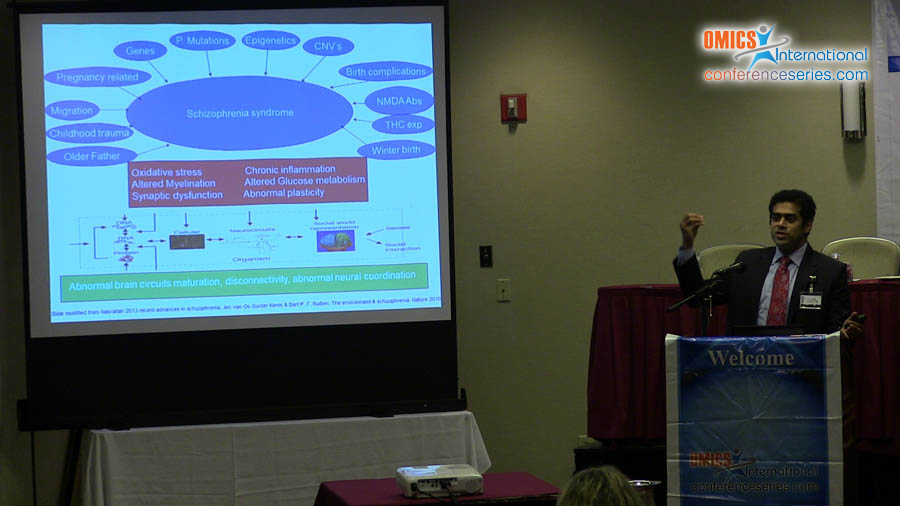Nithin Krishna
University of Maryland School of Medicine, USA
Title: Long range frontal/posterior phase synchronization during remembered pursuit task is impaired in schizophrenia
Biography
Biography: Nithin Krishna
Abstract
Although smooth pursuit eye movement (SPEM) is a reliable endophenotype of schizophrenia, exact underlying cognitive and neural substrates remain unknown. A simple mechanistic model of SPEM assumes an efficient interaction in integrating sensory input from the medial temporal (MT)/medial superior temporal (MST) brain regions and subsequent motor response through the frontal eye field (FEF). Poor functional connectivity between these two regions could explain impaired motion perception and SPEM maintenance in schizophrenia. In the present study, we combined an eye tracking paradigm with electroencephalography (EEG) recordings to investigate the putative functional connectivity among frontal/posterior brain regions in mediating the modulation of SPEM. Twenty four schizophrenic (SZ) and 22 healthy control (HC) participants performed remembered pursuit tasks with EEG recordings. Behaviorally, HC subjects showed significant improvement in SPEM response on repeated presentations of target compared to SZ subjects. Neurophysiologically HC subjects showed higher frontal/posterior phase synchronization in the beta to low gamma range frequency bands during all target presentations. In addition there was a significant increase in phase synchronization in the beta-2 frequency band in HC subjects during late compared to early target presentation. In contrast, higher frontal/posterior phase synchronization in the beta-2 frequency predicted better performance during late target presentation and lower enduring psychosis in SZ subjects. These data suggest a pathologically perturbed connectivity between frontal and posterior cortical regions during SPEM in SZ. The integrative eye tracking-EEG approach used in this study to dissect the endophenotype may reveal novel targets for studying schizophrenia psychopathology.



